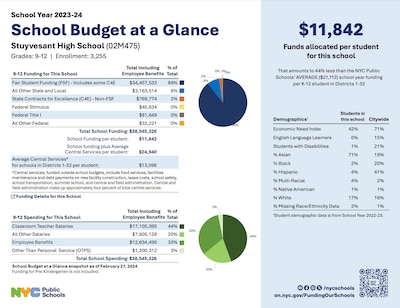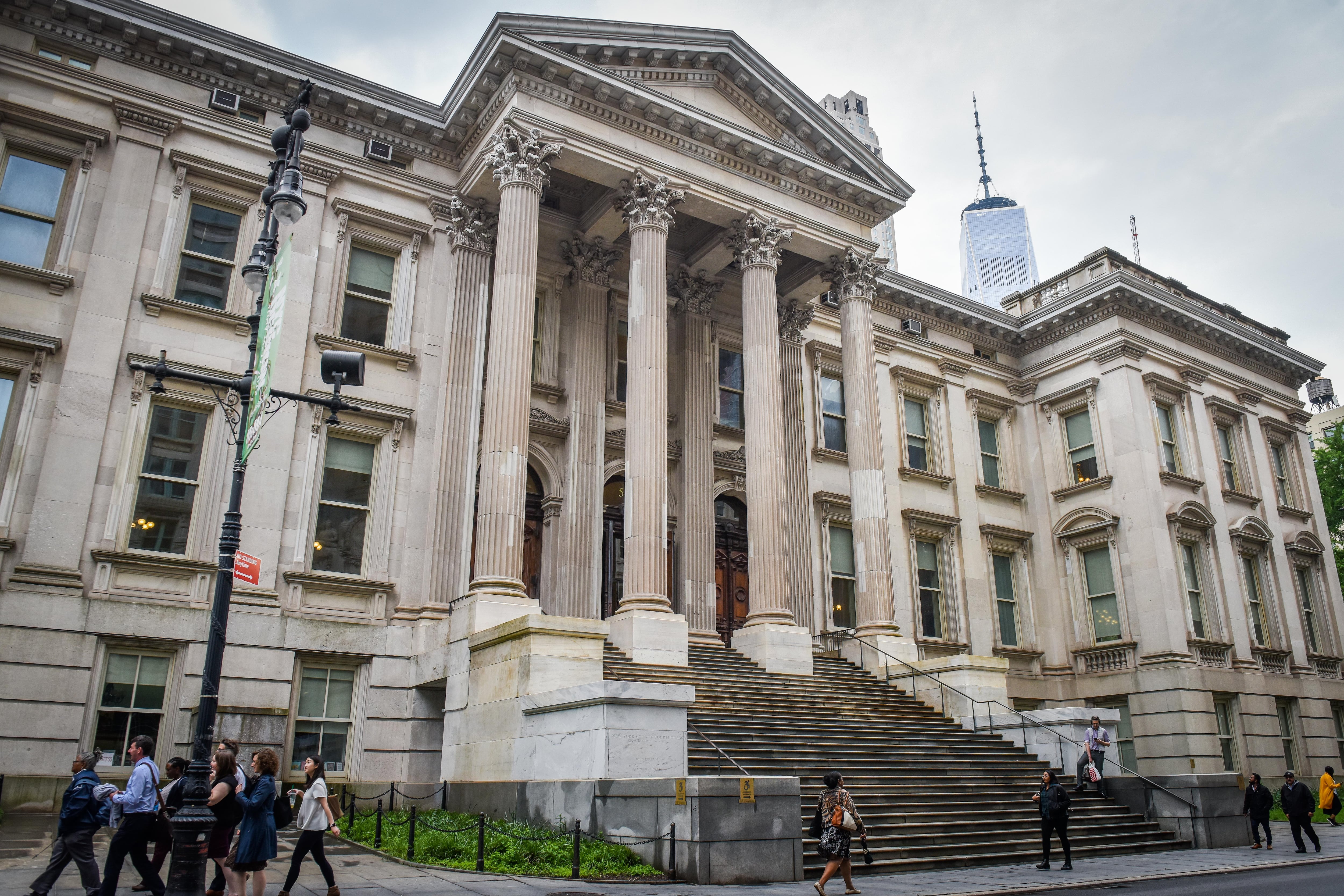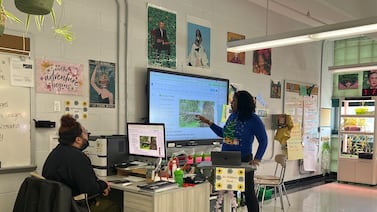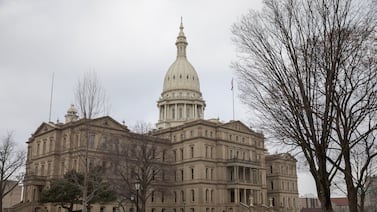How much money did your New York City school get this school year?
For years, the answer to that seemingly basic question has been surprisingly difficult to track down. While the city publishes detailed breakdowns of several components of a school’s budget, there was previously no public place where all those individual parts were added together.
A new online tool the Education Department rolled out in recent weeks is meant to change that.
The online infographics, called “Budget At A Glance,” provide an overview of a school’s entire budget, including the money it gets through the Fair Student Funding formula, an algorithm designed by the city Education Department to direct more money to higher-need schools, along with city, state, and federal initiatives like Title I funding for high-poverty schools.

The pages break down how much money each school received per student, and allows you to compare it to the citywide average of roughly $21,112 per student.
“Our families are our primary stakeholders, and transparency efforts like this help make school budgets more accessible for our families,” said Emma Vadehra, the Education Department’s chief operating officer. Vadehra said the idea for the pages grew out of recommendations from a working group convened in 2022 to improve the Fair Student Funding formula, which accounts for about two-thirds of school budgets.
A searchable version of the tool is available on the Education Department’s website. The Budget At A Glance pages are also posted on each school’s official city website. You can find the pages by navigating to the “Reports” tab on the school website, then clicking on “Budget and Finances.”
Along with the breakdowns of which sources of funding the school’s budget came from, the pages detail where the money went. They show the share of the budget going toward teacher salaries, salaries of other employees, non-personnel costs like supplies, and pension benefits.
The average spending of $21,112 per student doesn’t include expenses that benefit schools but are administered centrally, like school food, transportation, safety agents, and facilities maintenance. Those costs average out to around $13,000 per student, bringing the average total spending per student to around $34,000.
Schools outside of the city’s 32 community school districts, including District 75 programs for students with significant disabilities, also have Budget At A Glance pages, but are funded through a different formula.
Michael Elsen-Rooney is a reporter for Chalkbeat New York, covering NYC public schools. Contact Michael at melsen-rooney@chalkbeat.org.






